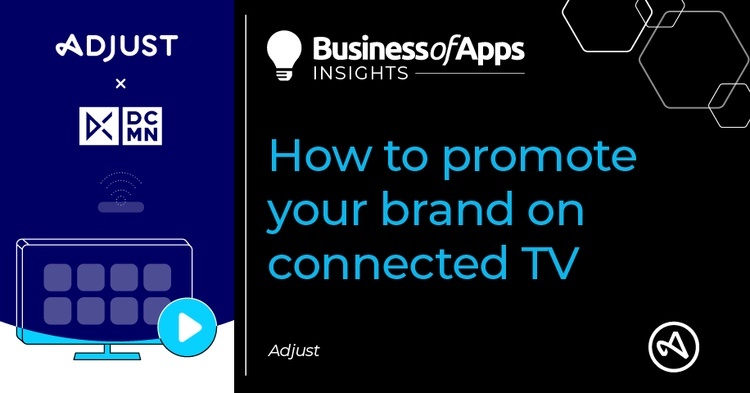Adjusts and DCMN’s latest guide looks at the ins and outs of advertising on Connected TV.
The TV landscape has evolved significantly over the last ten years, with innovations such as smart TVs and brands like Netflix or Amazon Prime driving radical changes in viewing habits. The precipitous rise of streaming services, along with increasing rates of cancellations for cable subscriptions means there are now more US households reachable via streaming devices than traditional ones. And this is not only a US phenomenon, markets all over the globe are following similar patterns.
So how can advertisers respond? Forward thinking advertisers have already started testing Connected TV (CTV) as a means to reach their users, either alongside an existing linear TV strategy, or as a standalone channel. In the latest how-to guide from Adjust, the ins and outs of CTV’s complex ecosystem is laid out and broken down, with practical tips on how to get started.
Download Connected TV: the ultimate how-to guide from Adjust.
The CTV ecosystem explained
With over 82% of US households having at least one internet connected TV, it’s no surprise that 60% of marketers are shifting ad dollars from linear to CTV and OTT. As a result, the CTV market is predicted to grow to USD $19 billion by the end of 2024. With all of this in mind, it makes sense to start developing a CTV advertising strategy now, but as with all new marketing channels, the ecosystem and the different players within it can be a little confusing at first. Adjust and DCMN’s how-to guide breaks the ecosystem down into three main components – device, platform and apps.
The device
Examples of CTV devices include smart TVs and devices that can plug into a TV to display video content – like game consoles and streaming devices. Let’s take Roku as an example, the Roku stick is plugged into the back of a TV, providing a connection to the internet.
The platform
The second piece is the platform, like Roku OS – an operating system developed specifically for streaming TV, which is also the software that powers all Roku streaming devices. There are ad placements in this interface available via direct deals with Roku.
The apps
The third part of the ecosystem is the apps themselves – and predominantly streaming apps including Netflix, Amazon Prime and Disney+. However, there are many apps coming from other verticals too, particularly gaming, which is the second largest category on Amazon Fire TV and Apple TV. To put this into perspective, on Roku OS alone there are more than 23,000 apps. Many of the apps offer the ability to show ads (ad inventory) available via their SSP or network. Advertisers can access this programmatically via their DSP or by working directly with ad networks.
You can purchase ad space within the CTV ecosystem in a variety of ways such as buying programmatically and working with a DSP, working directly with a platform such as Roku or Samsung or working directly with CTV apps or publishers. These methods all come with their own benefits and limitations and the one you choose depends completely on your business, resources and goals. For more information on these different methods, download Adjust and DCMN’s ultimate how-to guide.
Once you’re up and running, you’ll be able to take advantage of an ad format that feels like the familiar TV ad – an in-stream, pre-roll ad of 15-30 seconds in length, appearing before or in the middle of a piece of streamed content, however CTV offers new and exciting opportunities.
Essentially CTV ad formats have the potential to combine the best of two worlds: the visual and messaging potential of TV and the interactive potential of digital advertising. And consumers are responding to these engaging ads: this study shows that 82% of DTC shoppers are taking action after seeing a CTV ad.
For more useful information on advertising with connected TVs, including practical tips on how to get started, download Connected TVs: the ultimate how-to guide from Adjust and DCMN for free.











